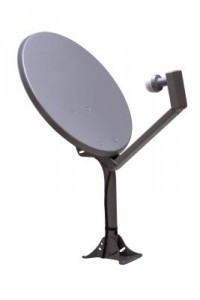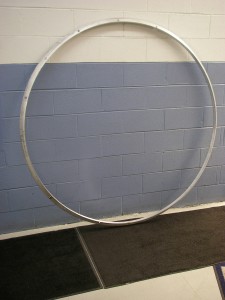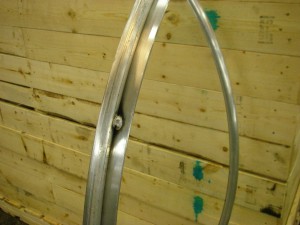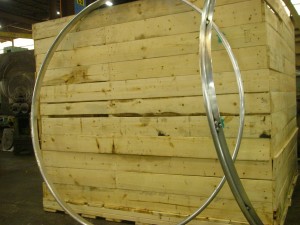Bending aluminum shapes into rings can be challenging. Fabricators know that aluminum work-hardens and often cracks during the forming process. Nevertheless, the benefits of using the light-weight material with its strong strength-to-weight ratio appeal to design engineers including those designing antennas.
Years ago when satellite TV reception required a dish 4 feet in diameter, the “petals” radiating out from the center of the disc were often supported by a 24-inch-diameter rolled angle ring made from hot rolled steel.
Today, the entire antenna for direct TV is less than 24 in diameter and therefore does not need a support, back-up ring.
There are other types of larger antennas that use structural metal formed into rings. Microwave or point-to-point antennas can often be seen on the top of towers near a highway or on top of buildings, especially hospitals. These antennas have two aluminum rings as the structure supporting a thin aluminum shroud covering the electronics inside. Some have a canvas cover which makes the whole assembly look like a tom-tom.
Manufacturers who roll the aluminum rings know from experience that certain sizes can be rolled to relatively tight diameters. At times the rolling house is able to use annealed aluminum to achieve tighter bends without cracking. Some fabricators believe that aluminum age hardens and try to obtain “fresh” material. Some metallurgists, however, dispute the claim of age hardening.
1-1/2 x 1-1/2 x 1/8 6061 aluminum angle rolled leg out to a 67 inch inside diameter into a full ring welded on the outside only and punched with 16 each 1/2 diameter holes on a 68-11/32 bolt circle for microwave antennas.
One inch OD 6061 aluminum tubing with a 1/8 wall rolled to a 66-11/16 inside diameter ring and aluminum 1/8 x 1-1/2 aluminum bar rolled the easy way to a 66-11/16 outside diameter ring. The tube ring and the bar ring are then tack welded together to become component parts of microwave antennas.
No doubt antenna design will continue to evolve while incorporating materials including aluminum rings.













